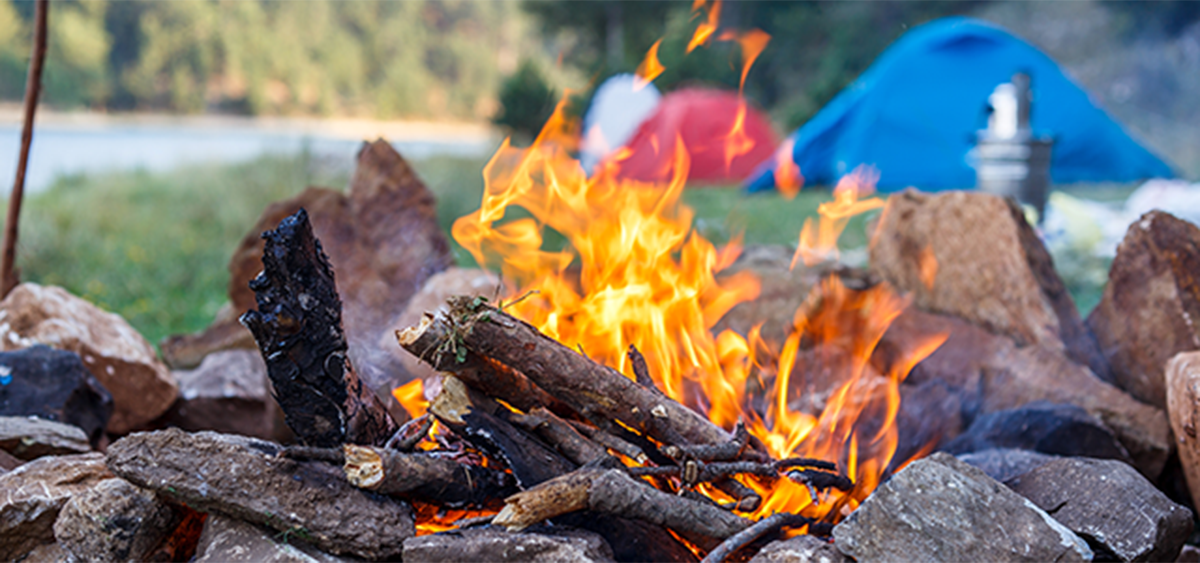For many, the campfire is a beloved and indispensable outdoor tradition—a kinetic, luminous, dreamlike force of nature that for generations has served as the centerpiece of backwoods gatherings. This article explains the key steps for building a successful campfire, as well as fire etiquette tips, whether you’re car camping or backpacking.

The first is where to make a fire. Ideally, campfires should be made in a fire ring. If a fire ring is not available, a temporary fire site may be constructed. Bare rock or vegetated ground is ideal for a fire site. Alternatively, turf may be cut away to form a bare area and carefully replaced after the fire has cooled to minimize damage. Another way is to cover the ground with sand, or other soil mostly free of flammable organic material, to a depth of a few inches. A ring of rocks is sometimes constructed around a fire. Fire rings, however, do not fully protect material on the ground from catching fire. Flying embers are still a threat, and the fire ring may become hot enough to ignite material in contact with it, or the heat the water to a vapor thereby cracking the rocks.

The second is to pay attention to fire safety measures. Campfires can spark wildfires. As such, it is important for the fire builder to take multiple safety precautions, including:
- Avoiding building campfires under hanging branches or over steep slopes, and clearing a ten-foot diameter circle around the fire of all flammable debris.
- Having enough water nearby and a shovel to smother an out-of-control fire with dirt.
- Minimizing the size of the fire to prevent problems from occurring.
- Never leave a campfire unattended.
- When extinguishing a campfire, using plenty of water or dirt, then stirring the mixture and adding more water, then check that there are no burning embers left whatsoever.
- Never bury hot coals, as they can continue to burn and cause root fires or wildfires. Be aware of roots if digging a hole for your fire.
- Making sure the fire pit is large enough for the campfire and there are no combustibles near the campfire, and avoiding the construction of the campfire on a windy day.

Tinder lights easily and is used to start an enduring campfire. It is anything that can be lit with a spark and is usually classified as being thinner than your little finger. The tinder of choice before matches and lighters was amadou next to flint and steel. A few decent natural tinders are cotton, birch bark, cedar bark, and fatwood, where available; followed by dead, dry pine needles or grass.
Kindling wood is an arbitrary classification including anything bigger than tinder but smaller than fuel wood. In fact, there are gradations of kindling, from sticks thinner than a finger to those as thick as a wrist. A quantity of kindling sufficient to fill a hat may be enough, but more is better.
Fuel wood can be different types of timber. Timber ranges from small logs two or three inches across to larger logs that can burn for hours. It is typically difficult to gather without a hatchet or other cutting tools. In heavily used campsites, fuel wood can be hard to find, so it may have to be purchased at a nearby store or be brought from home.

